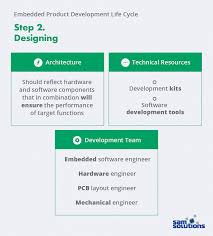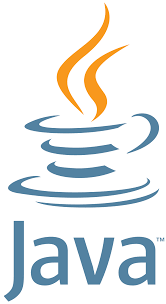The Best Application Development Software for Building Powerful Apps: A Comprehensive Guide
The Best Application Development Software for Building Powerful Apps
Choosing the right application development software is crucial for creating efficient and user-friendly apps. With a plethora of options available in the market, it can be overwhelming to select the best one for your needs. Here, we highlight some of the top application development software that can help you build powerful and innovative applications:
Microsoft Visual Studio
Microsoft Visual Studio is a popular integrated development environment (IDE) that offers a comprehensive set of tools for building various types of applications. It supports multiple programming languages and provides excellent debugging and testing capabilities.
Xcode
Xcode is an IDE specifically designed for developing apps for Apple devices. It comes with a range of features such as Interface Builder, XCTest framework, and Instruments for performance analysis, making it a preferred choice for iOS and macOS app development.
Android Studio
Android Studio is the official IDE for Android app development. It offers tools like layout editor, APK analyzer, and virtual device manager to streamline the app development process. With support for Kotlin programming language, Android Studio enhances productivity and code quality.
Adobe Dreamweaver
Adobe Dreamweaver is a versatile web development tool that enables developers to create responsive websites and web applications with ease. Its visual design features coupled with robust coding capabilities make it an ideal choice for front-end developers.
Unity
Unity is a powerful game development platform that allows developers to create immersive 2D and 3D games across multiple platforms. With its intuitive interface, extensive asset store, and strong community support, Unity simplifies the game development process.
When choosing application development software, consider factors such as your project requirements, budget constraints, programming language preferences, and platform compatibility. By selecting the right tool that aligns with your needs, you can accelerate the app development process and deliver exceptional results.
Top 7 Frequently Asked Questions About the Best Application Development Software
- What is the best platform to create an app?
- Which software is used to build apps?
- Which software is best for application development?
- Which technology is best for application development?
- What is the most popular app development platform?
- Which software is best for app development?
- Which software is best for Web application?
What is the best platform to create an app?
When it comes to choosing the best platform to create an app, the answer can vary depending on your specific needs and goals. Some popular platforms for app development include Microsoft Visual Studio, Xcode, Android Studio, Adobe Dreamweaver, and Unity. Each platform offers unique features and tools tailored for different types of applications. Factors to consider when selecting a platform include the target audience, desired functionalities, ease of use, programming language support, and compatibility with the intended operating systems. By evaluating these aspects carefully, you can determine the best platform that aligns with your project requirements and helps you create a successful app.
Which software is used to build apps?
When it comes to building apps, there are several software options available to developers. Some popular choices include Microsoft Visual Studio, Xcode, Android Studio, Adobe Dreamweaver, and Unity. These tools offer a range of features and capabilities tailored to different types of applications, such as mobile apps, web applications, and games. The choice of software often depends on factors like the target platform (iOS, Android, web), programming language preferences, and specific project requirements. By selecting the right software for app development needs, developers can streamline the development process and create high-quality applications efficiently.
Which software is best for application development?
When it comes to determining the best software for application development, the answer largely depends on individual preferences, project requirements, and specific goals. Various factors such as programming language support, ease of use, collaboration features, platform compatibility, and community support play a significant role in selecting the most suitable tool. Popular choices like Microsoft Visual Studio, Xcode, Android Studio, Adobe Dreamweaver, and Unity are often recommended for their robust features and capabilities in different domains of application development. Ultimately, it is essential to evaluate each software’s strengths and weaknesses against your development needs to make an informed decision on the best application development software for your projects.
Which technology is best for application development?
When it comes to choosing the best technology for application development, there is no one-size-fits-all answer. The ideal technology varies depending on factors such as the type of application being developed, project requirements, scalability needs, budget constraints, and developer expertise. Some popular technologies for application development include Java, Swift, Kotlin, JavaScript, and C#. Each technology has its strengths and weaknesses, so it’s essential to evaluate your specific needs and goals to determine which technology aligns best with your project. Conducting thorough research and seeking advice from experienced developers can help you make an informed decision on selecting the most suitable technology for your application development endeavors.
What is the most popular app development platform?
When it comes to the most popular app development platform, there are several contenders that stand out in the tech industry. One of the leading platforms is Android Studio, which is widely used for developing applications for Android devices. Another prominent choice is Xcode, favored by developers working on iOS and macOS apps. Microsoft Visual Studio also holds a strong position as a versatile IDE for building applications across different platforms. Each of these platforms offers unique features and tools tailored to specific development needs, making them popular choices among developers seeking efficient and effective app development solutions.
Which software is best for app development?
When it comes to determining the best software for app development, there is no one-size-fits-all answer as it largely depends on individual preferences, project requirements, and expertise. However, some popular choices among developers include Microsoft Visual Studio for its versatile tools and multi-language support, Xcode for iOS and macOS app development, Android Studio for Android apps with Kotlin support, Adobe Dreamweaver for web applications, and Unity for game development across platforms. It’s essential to consider factors such as ease of use, feature set, platform compatibility, and community support when selecting the most suitable application development software for your specific needs.
Which software is best for Web application?
When it comes to developing web applications, there are several software options available that cater to different needs and preferences. Some popular choices for web application development software include Adobe Dreamweaver, Visual Studio Code, Sublime Text, and Atom. These tools offer a range of features such as code editing, debugging, and project management capabilities that can streamline the web development process. Ultimately, the best software for web application development depends on factors like the developer’s skill level, project requirements, and personal preferences. It’s essential to explore different options and choose the software that aligns best with your specific needs to create successful and efficient web applications.





